If we want to increase the proportion of fir in our forests, we need to protect it more against pests
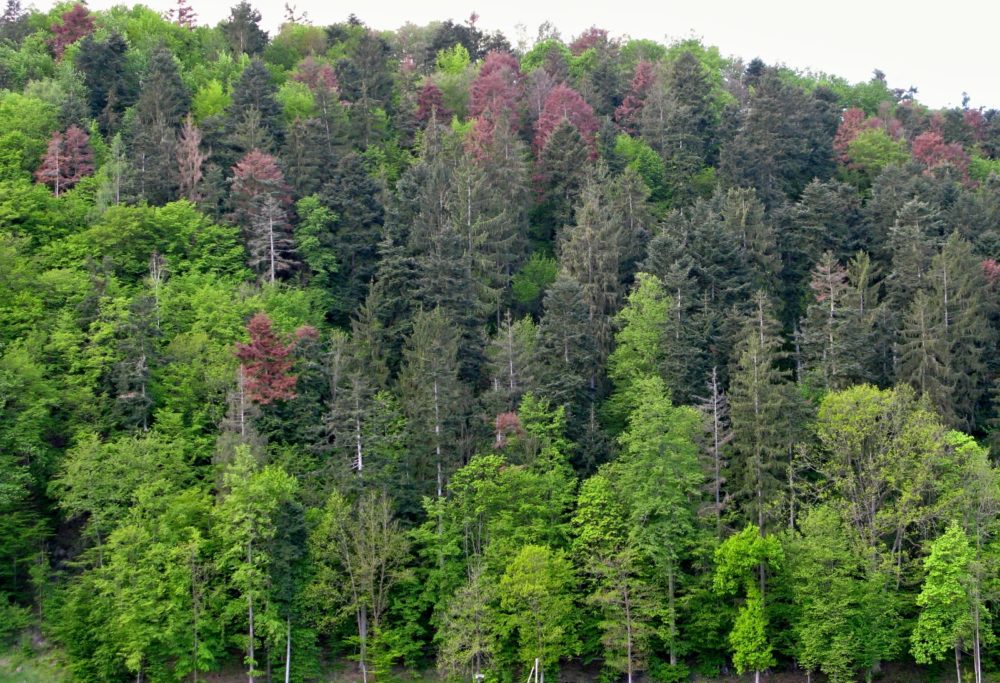 Photo: An example of intensive die-off of silver fir in a mixed slope stand due to drought and attack by bark beetles (Bohemia, central Povltaví), author Jan Liška
Photo: An example of intensive die-off of silver fir in a mixed slope stand due to drought and attack by bark beetles (Bohemia, central Povltaví), author Jan Liška
The silver fir is a crucial native tree species in Europe, serving important ecological, economic, and social functions. It protects soil and biodiversity, and its forests are used for recreational activities. Additionally, it is used for air quality monitoring. Currently, only 1.2% of forests in the Czech Republic consist of silver fir, despite the fact that it should naturally represent up to 20% and is recommended to be almost 8%. Therefore, it is crucial to protect the species against pests to increase its representation in forests.
During the middle of the 19th century, there was a gradual decrease in the presence of silver fir trees in the forests of Central Europe. This was due to the introduction of rational clear-cut spruce management. Throughout the 20th century, this trend continued. The cause of this decrease is attributed to a complex combination of factors, such as emissions of sulphur and other pollutants, soil acidification, lack of genetic variability, pathogens, parasitic organisms, and weather fluctuations (such as extreme temperatures and periods of drought). Additionally, unsuitable forestry and hunting management, including inadequate forest protection, have also contributed to this decline.
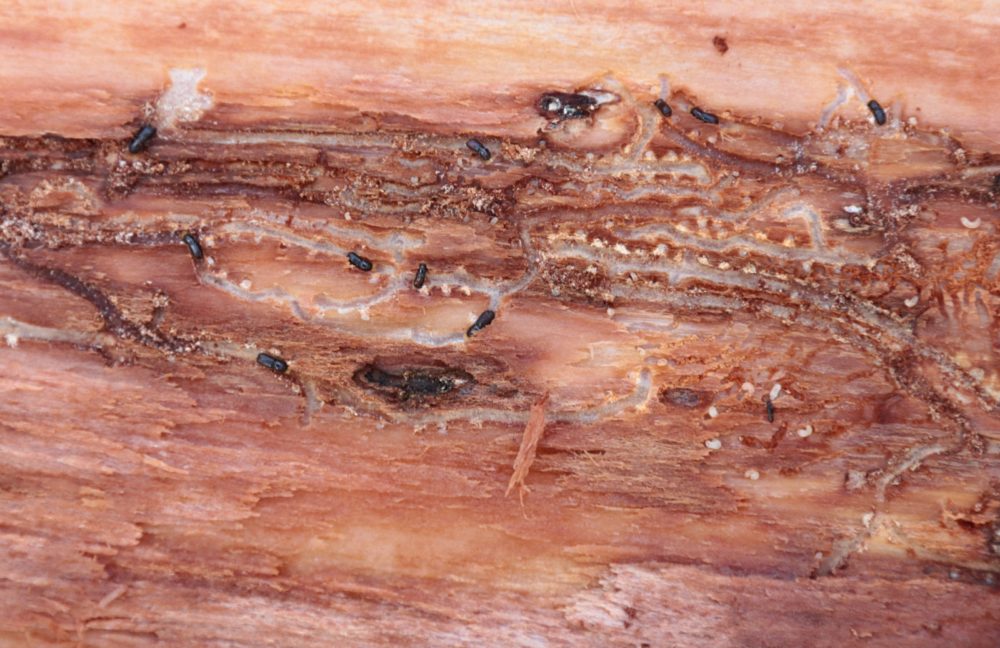 Photo: Grub hole of a bark beetle Pityokteines spinidens – female laying eggs, LOS archive
Photo: Grub hole of a bark beetle Pityokteines spinidens – female laying eggs, LOS archive
Following the extreme climate events that occurred in 2015, the health of the silver fir in several regions of the Czech Republic significantly declined. This led to a rise in the occurrence of secondary harmful agents such as bark and wood-destroying insects, sucking insects, and fungal diseases. These agents have multiplied catastrophically in many places, leading to the withering and death of stands that were already physiologically damaged and weakened.
The protection of silver fir against pests and harmful influences has become increasingly important, as efforts to increase the proportion of the species in our forests continue. To aid practical foresters in this task, scientists from the Forest Protection Service (LOS) VÚLHM, v. v. i. have developed a certified methodology for the protection of silver fir against insect pests and fungal diseases (Ochrana jedle proti hmyzím škůdcům a houbovým chorobám). This methodology was created as part of research project No. QK1910292, which aims to promote the growth of silver fir in the forest management of the Czech Republic.
Scientists have developed a methodology to control and protect against harmful biotic agents based on their current knowledge of the spectrum of these agents. The methodology was also developed by incorporating new knowledge. In addition, scientists have identified newly detected species that show harmful effects on silver fir.
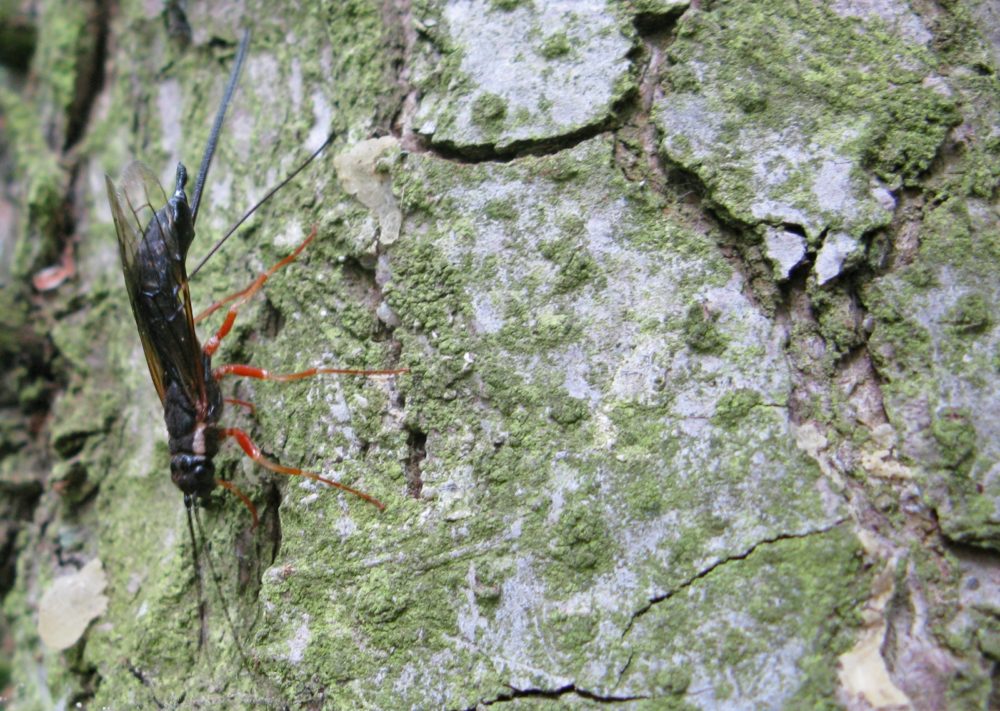 Photo: Female of horntail black wasp on a fir tree stem, LOS archive
Photo: Female of horntail black wasp on a fir tree stem, LOS archive
Among the significant biotic pests of silver fir are bark insects, particularly the bark beetles of the genus Pityokteines, which include the bark beetle P. spinidens and P. vorontzowi (European fir engraver beetle). Both species often infest trees together. The silver fir bark beetle (Pityokteines curvidens), which was frequently reported in the past, is currently categorized as a very rare to rare species with minimal forestry importance in the Czech Republic.
In recent decades, there has been a significant decrease in the occurrence of the silver fir bark beetle (Pityokteines curvidens) in nature, compared to half a century ago when it was a common species of bark beetle fauna in many areas of the Czech Republic. The reasons for this phenomenon are not yet fully understood, but one possibility is the decline of old fir stands, which are the most suitable habitat for this species.
The Steely-blue Wood Wasp is a significant wood-destroying insect that becomes more prevalent in older fir stands, and it is considered a major secondary pest in many areas.
Leaf-eating insects in fir forests across Central Europe are currently decreasing in numbers and have little to no negative impact. Some once-important species are now considered extinct. However, the importance of sucking insects in fir stands has recently been growing strongly.
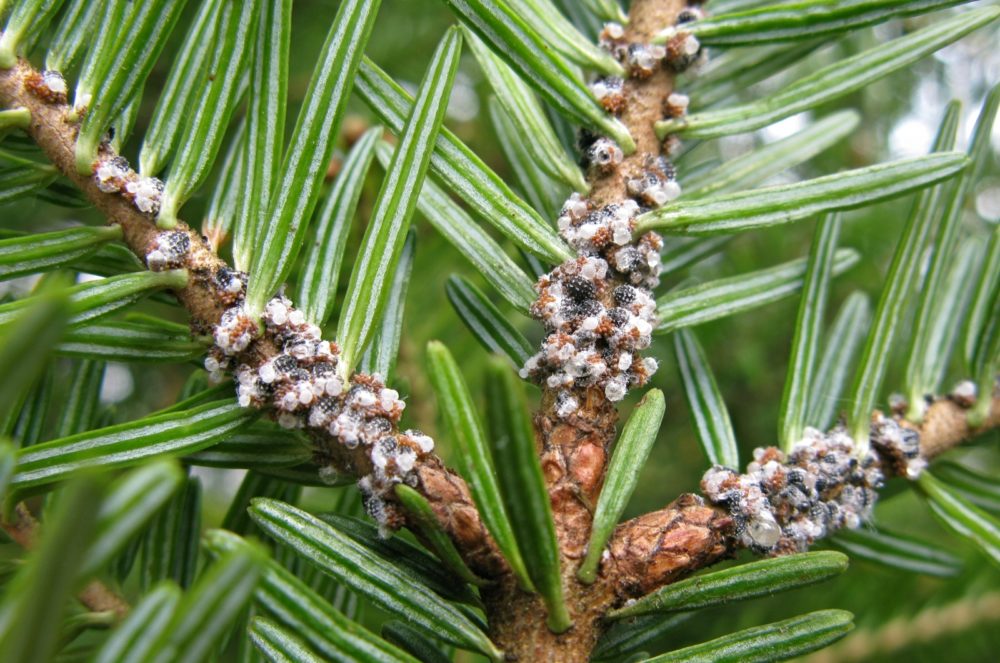 Wingless females, egg clutches, and hatching larvae of Dreyfusia nordmannianae (silver fir adelges) can be seen on the underside of a fir twig. Photo from LOS archive.
Wingless females, egg clutches, and hatching larvae of Dreyfusia nordmannianae (silver fir adelges) can be seen on the underside of a fir twig. Photo from LOS archive.
Among fungi, the Dark Honey Fungus (Armillaria ostoyae), the Basidiocarps (Heterobasidion annosum), and the factors responsible for seedling drop and root rot are the most significant pests. In recent times, silver fir mistletoe has become increasingly prevalent and important. However, the restoration and repatriation efforts in fir forests are severely restricted or even impossible due to the excessive population of ungulates.
It is important to strengthen preservation procedures for firs, especially at higher altitudes, due to their greater drought resistance and resilience compared to spruces, beeches, and larches, particularly in light of anticipated climate changes.
Silver fir is a species that tends to grow in the later stages of forest development. Given the right conditions, it has the potential to spread its range in Europe. However, in areas where it already occurs, there may be a significant decrease in both the size of the population and the original area where it was found.
To ensure the protection of the silver fir, the forestry practice should implement suitable management techniques. This is especially important due to the changing climate, which could result in an uneven distribution of precipitation throughout the year, as well as an increase in wind gusts. Such weather conditions could lead to mechanical damage and severe bark beetle attacks on the fir, while also making the trees more vulnerable to drought.
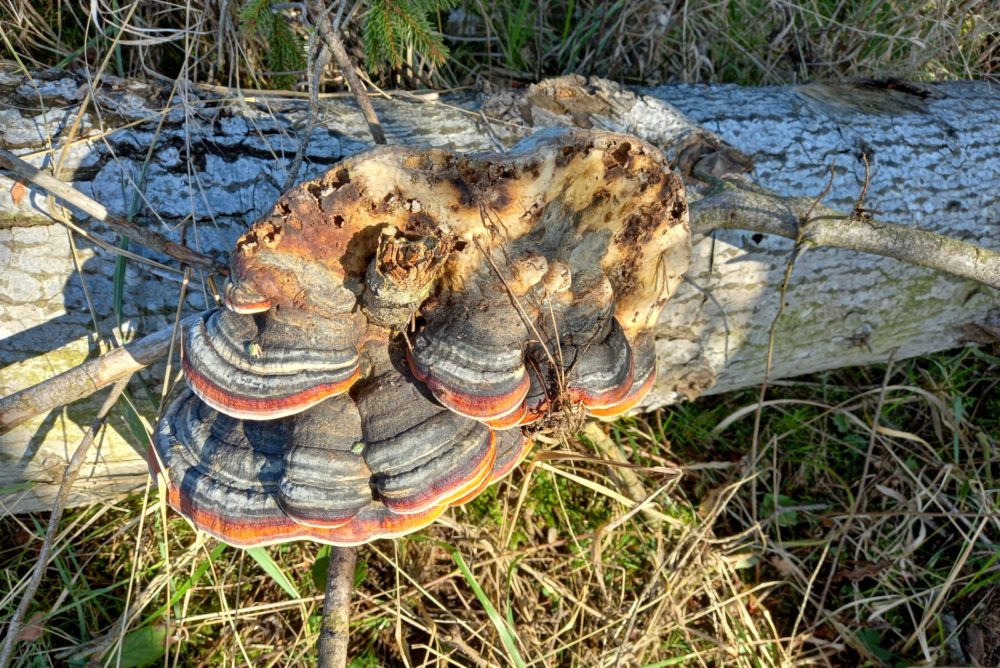 Photo: Fruiting body of fungus Fomitopsis pinicola on a silver fir stem, LOS archive
Photo: Fruiting body of fungus Fomitopsis pinicola on a silver fir stem, LOS archive
The methodology is essential in providing a concise summary of information on various aspects of forestry and economic importance, including bionomics and distribution of individual species. It also involves designing practical and feasible methods of protection and defense for newly discovered or previously insignificant species of harmful organisms.
Besides this, scientists have revised defense procedures against existing harmful agents based on gained knowledge.
The methodology provides users with the required information to take effective measures for forest protection. This includes preventing the formation and growth of harmful organisms and suppressing existing ones, whether they are already known or newly established. It helps users to combat gradations and protect the forest effectively.
Authors of methodology: Ing. Miloš Knížek, Ph.D., Ing. František Lorenc, Ph.D., Ing. Marie Zahradníková, Ing. Jan Liška; FGMRI (VÚLHM, v. v. i.); e-mail: knizek@vulhm.cz
Methodology Protection of fir against insect pests and fungal diseases (Ochrana jedle proti hmyzím škůdcům a houbovým chorobám) can be downloaded here.
Prepared according to the original by Ing. Jan Řezáč, VÚLHM, v. v. i., e-mail: rezac@vulhm.cz
Opening photo: Pheromone trap for monitoring bark beetles of genus Pityokteines, LOS archive
